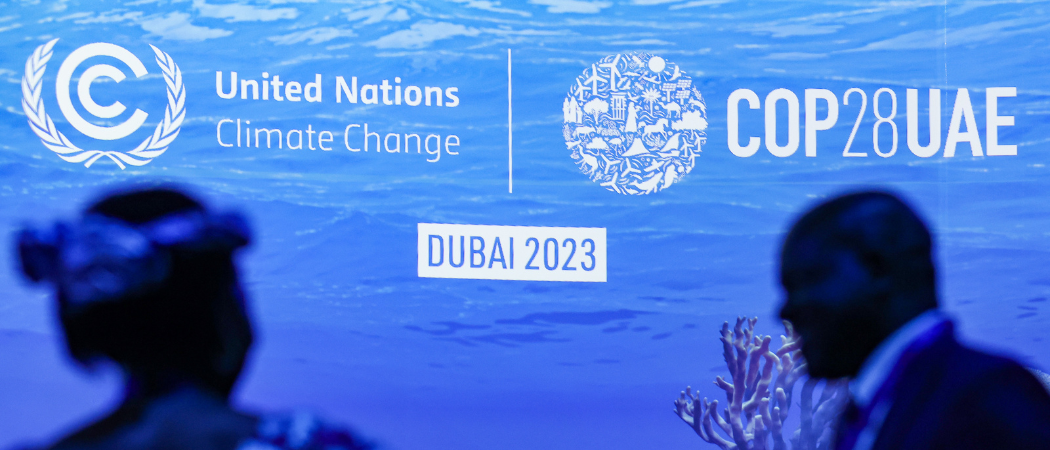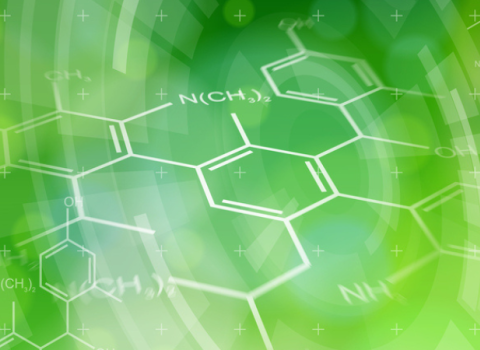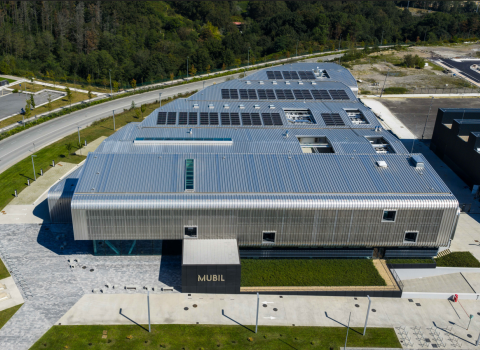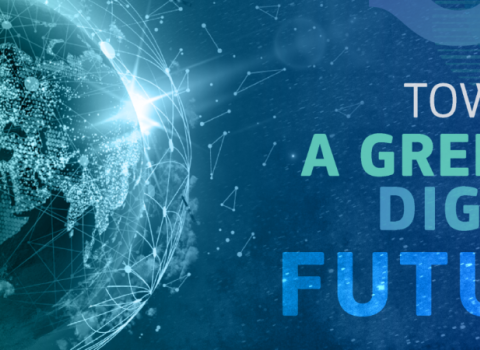With COP28 underway in the United Arab Emirates, universities and funders face a dilemma over whether and how to investigate stratospheric aerosol injection, a potential last-ditch resort for climate change

Photo: COP28 / Christopher Pike / Flickr
This week and next, world leaders, university heads and entrepreneurs are discussing planet-saving technologies from solar panels and methane tracking systems, to hydrogen energy and nuclear fusion, at the COP28 climate conference in the United Arab Emirates.
From an R&D point of view, the overall challenge is to prototype and scale up new green technologies as quickly as possible.
But there’s one technology, talked about on the margins of the conference, which is still an ethical hot potato for scientists and research funders: stratospheric aerosol injection (SAI), a form of geoengineering. The idea behind SAI is to mimic the cooling impact of a volcano by spraying sulphates or other particles from a fleet of planes into the atmosphere, reflecting light back into space.
There’s not that much scientific doubt it would, at least on average, cool the earth, judging from natural eruptions.
But the effects could vary widely by region, and there’s the risk of as yet unknown side-effects. Critics also worry the technology’s mere existence could be used by fossil fuel interests to justify continued business as usual.
For scientists in this field, there’s an urgent need for guidance on whether and how to research SAI, particularly as controversial real-world experiments are now needed to better understand if it would work.
“We’ve learned quite a lot from modelling research, but we’re starting to get diminishing returns,” said Rob Bellamy, a climate and society lecturer at Manchester University. “If we’re going to progress this we need to do some [real world] experiments, albeit in a responsible way.”
So far, such experiments have often failed to get off the ground. In 2021, a Harvard University-organised balloon test flight in Sweden was cancelled after an outcry from indigenous groups.
The EU is beginning to fund work on precisely these kinds of research ethics questions. Bellamy and a pan-European team are part of Co-CREATE, a Horizon Europe funded three year project starting in 2024 that will explore how to ethically conduct experiments into solar radiation modification, a type of geoengineering of which SAI is the most feasible.
Gaps and uncertainties
Two recent reports have made the case to universities and research funders that they should be investigating geoengineering, albeit with a string of ethical caveats attached.
Last week, UNESCO’s science ethics commission released its take on the technology, and warned there are “substantial gaps and uncertainties” in scientific knowledge about geoengineering.
“It is necessary to build research capacity to increase the community of experts and to integrate that community into the policy-making process,” the committee said.
This followed another report in September from the Climate Overshoot Commission, a global group of 12 former politicians, heads of non-governmental organisations and academics, headed by former EU trade commissioner Pascal Lamy.
It also called for “strengthened” research into solar radiation management, making sure to include scientists from the global south, and being transparent about sources of funding.
“Scientific research is in its early stages and is far from supporting informed decision-making about […] use or non-use,” the report says. “More research is needed, including in developing countries, to help determine whether to proceed with this technology and if so how.”
Excuse to delay
For critics of geoengineering, firming up the technology only risks creating a reason to delay cutting emissions.
“By and large, I would indeed oppose a strong expansion of research, as long as it is not clear what kind of research we are talking about, what purposes it serves,” said Jeroen Oomen, an assistant professor at Utrecht University who has written a book on geoengineering. “At this point, I still think that solar radiation modification has huge potential to be used as a way to avoid stringent mitigation commitments,” he said.
Oomen pointed to comments from COP28 president Sultan Al Jaber – who is also head of the Abu Dhabi National Oil Company – who earlier this week said there is “no science” to show that phasing out fossil fuels is necessary to limit global warming to 1.5 degrees.
“Is there any reason to think they won’t jump on [geoengineering] research soon?” said Oomen, one of around 60 academics who last year backed a call to halt development of solar radiation management.
The counter-argument is that just because a technology is developed doesn’t mean it will or should be used, said Bellamy. What’s more, as the earth heats up, the temptation will grow for a single country or rich individual to perform SAI unilaterally, meaning it’s important to perform research to understand the risks before this happens.
The danger of maverick geoengineering became more real last year when a startup called Making Sunsets revealed that it has been releasing balloons filled with sulphur dioxide in Mexico in a bid to cool the climate. Scientists were outraged, saying that it risked discrediting SAI altogether.
Transboundary harm
Although both UNESCO and the Overshoot Commission back more research, they are both much more sceptical about actually deploying SAI, at least until there is more scientific certainty and global governance in place.
In particular, the Overshoot Commission wants a global moratorium on deploying solar radiation management and of “large-scale outdoor experiments that would carry risk of significant transboundary harm.”
But precisely defining the boundary between acceptable experimentation and controversial deployment is going to be hard, Bellamy said. His work canvassing public opinion on geoengineering found no consensus on where the limit should lie. And so far, even small-scale experiments like Harvard’s balloon test flight have proven highly controversial.
That said, the Overshoot Commission envisages a research effort stretching perhaps to mid-century before the world even contemplates using SAI. “Any such scenario would need to be preceded by a decade-long research programme and possibly a multi-decade phased testing period,” it said.





 A unique international forum for public research organisations and companies to connect their external engagement with strategic interests around their R&D system.
A unique international forum for public research organisations and companies to connect their external engagement with strategic interests around their R&D system.